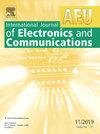A cost-effective hardware accelerator for PMDC motor-based auxiliary component automation of electric three-wheelers
IF 3
3区 计算机科学
Q2 ENGINEERING, ELECTRICAL & ELECTRONIC
Aeu-International Journal of Electronics and Communications
Pub Date : 2025-03-10
DOI:10.1016/j.aeue.2025.155766
引用次数: 0
Abstract
In this paper, a quadral-duty digital pulse width modulation (QDPWM) control-based hardware accelerator for the auxiliary permanent magnet brushed DC (PMDC) motors of electric three-wheelers (E3Ws) is proposed. The proposed accelerator involves a precise motor speed calculation circuit, including a buffer to hold the position encoder signal for a predefined number of clock cycles to eliminate encoder signal noise. The proposed hardware accelerator is described with supporting mathematical models and is implemented on field-programmable gate array (FPGA) as well as application-specific integrated circuit (ASIC) platforms using SCL 180 nm CMOS technology library. The ASIC implementation at 12.5 MHz shows that the proposed design has significantly less area and power consumption than the conventional PI-PWM controller-based architecture and is comparable to the dual-duty digital pulse width modulation (DDPWM) controller. The proposed FPGA prototype-driven motor attains a wider speed range with low-speed ripple than DDPWM controller-based architecture. The position signal buffer circuit also enables the accelerator to tolerate noise or glitches in the position encoder signal, which makes the speed calculation precise and reliable. The proposed hardware accelerator-based PMDC drive performance has been validated regarding settling time, speed tracking ability, tolerance to dynamic speed, and load variations on a laboratory test setup.
基于PMDC电机的电动三轮车辅助部件自动化的高性价比硬件加速器
针对电动三轮车辅助永磁有刷直流(PMDC)电机,提出了一种基于四工制数字脉宽调制(QDPWM)控制的硬件加速器。所提出的加速器包括一个精确的电机速度计算电路,包括一个缓冲区,用于将位置编码器信号保持预定义的时钟周期数,以消除编码器信号噪声。所提出的硬件加速器用支持的数学模型进行了描述,并使用SCL 180 nm CMOS技术库在现场可编程门阵列(FPGA)和专用集成电路(ASIC)平台上实现。12.5 MHz的ASIC实现表明,所提出的设计比传统的基于PI-PWM控制器的架构具有更小的面积和功耗,可与双工制数字脉宽调制(DDPWM)控制器相媲美。与基于DDPWM控制器的结构相比,所提出的FPGA原型驱动电机在低速纹波下实现了更宽的速度范围。位置信号缓冲电路还使加速器能够承受位置编码器信号中的噪声或故障,从而使速度计算精确可靠。所提出的基于硬件加速器的PMDC驱动性能已经在实验室测试装置上验证了沉淀时间、速度跟踪能力、对动态速度的容忍度和负载变化。
本文章由计算机程序翻译,如有差异,请以英文原文为准。
求助全文
约1分钟内获得全文
求助全文
来源期刊
CiteScore
6.90
自引率
18.80%
发文量
292
审稿时长
4.9 months
期刊介绍:
AEÜ is an international scientific journal which publishes both original works and invited tutorials. The journal''s scope covers all aspects of theory and design of circuits, systems and devices for electronics, signal processing, and communication, including:
signal and system theory, digital signal processing
network theory and circuit design
information theory, communication theory and techniques, modulation, source and channel coding
switching theory and techniques, communication protocols
optical communications
microwave theory and techniques, radar, sonar
antennas, wave propagation
AEÜ publishes full papers and letters with very short turn around time but a high standard review process. Review cycles are typically finished within twelve weeks by application of modern electronic communication facilities.

 求助内容:
求助内容: 应助结果提醒方式:
应助结果提醒方式:


